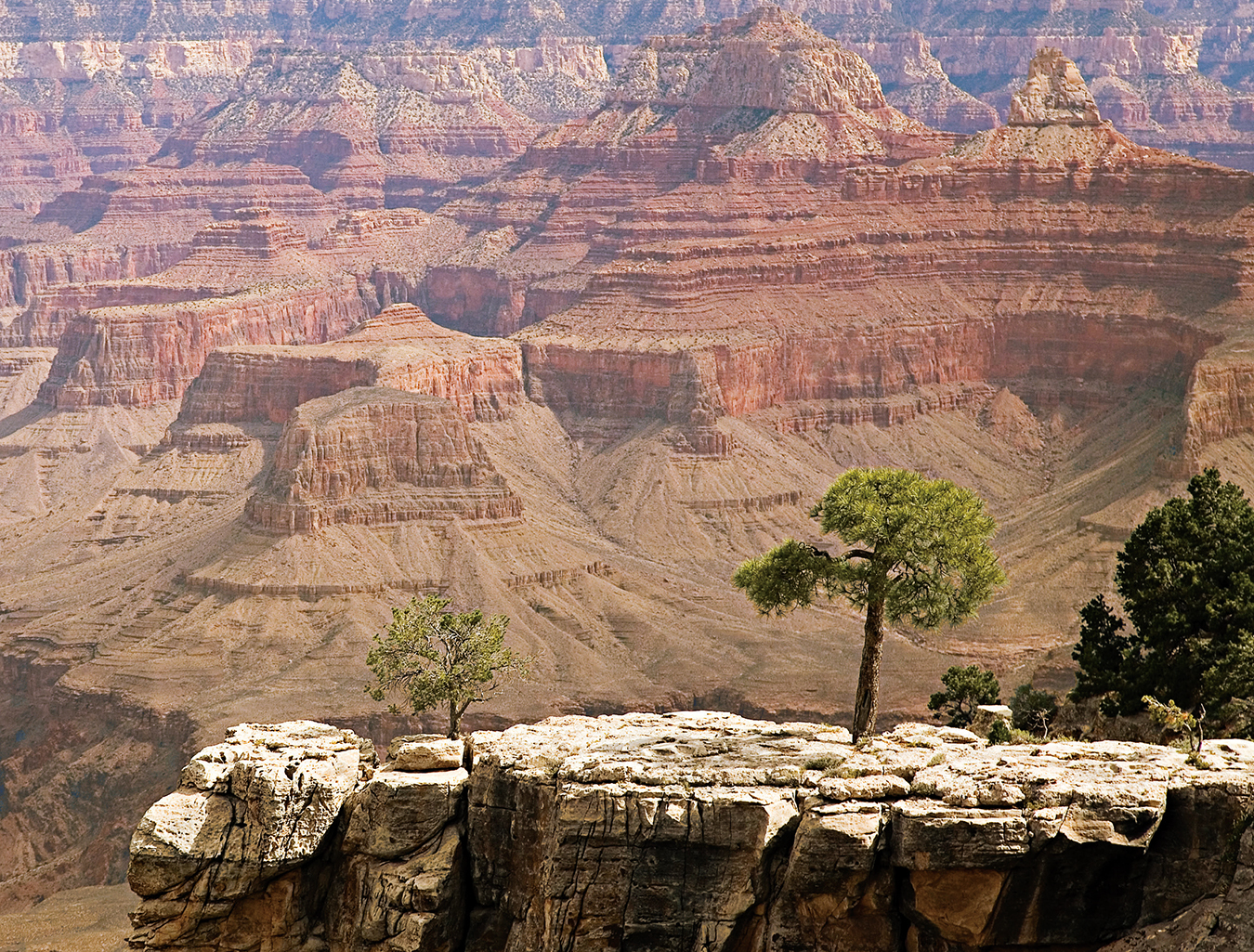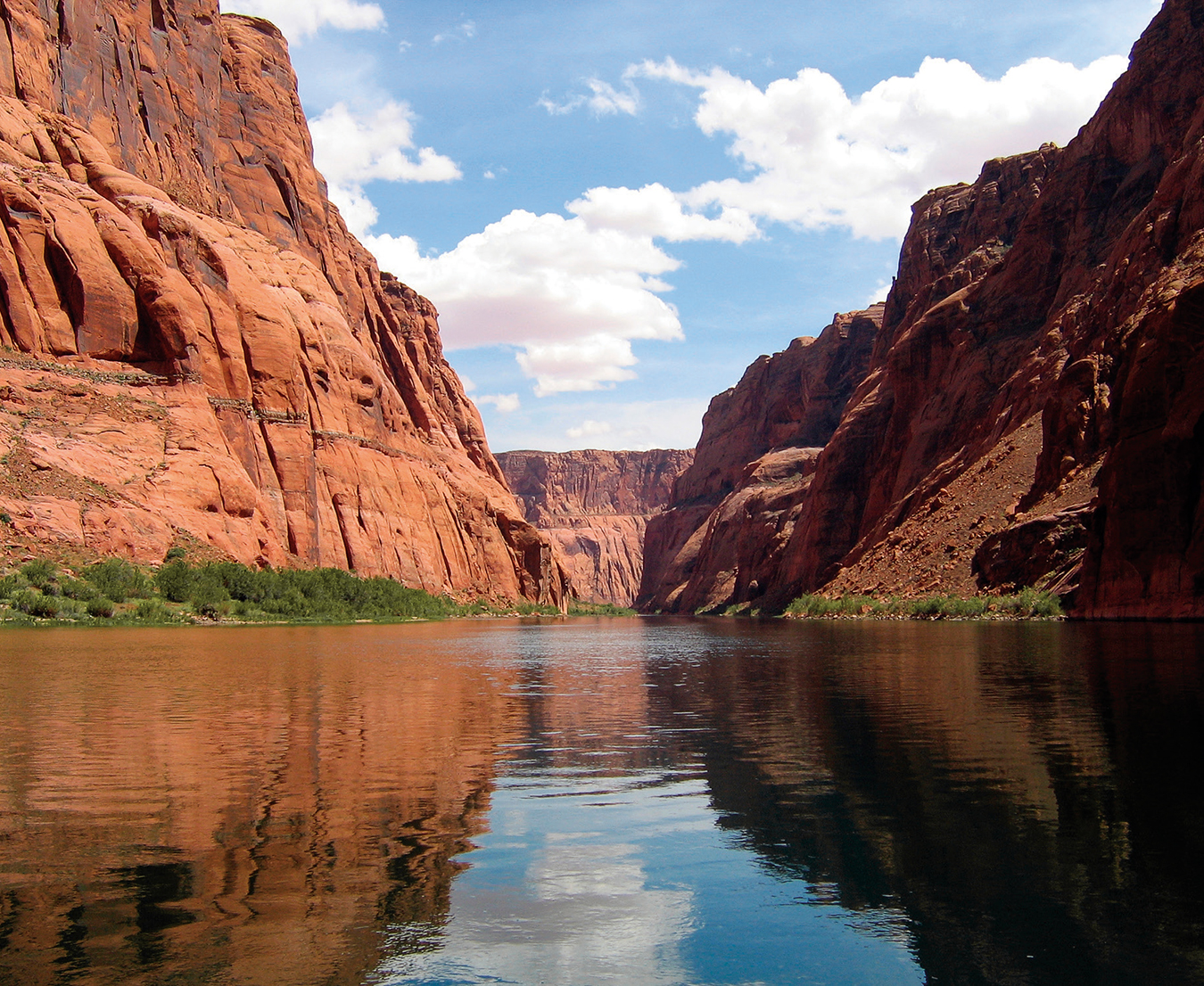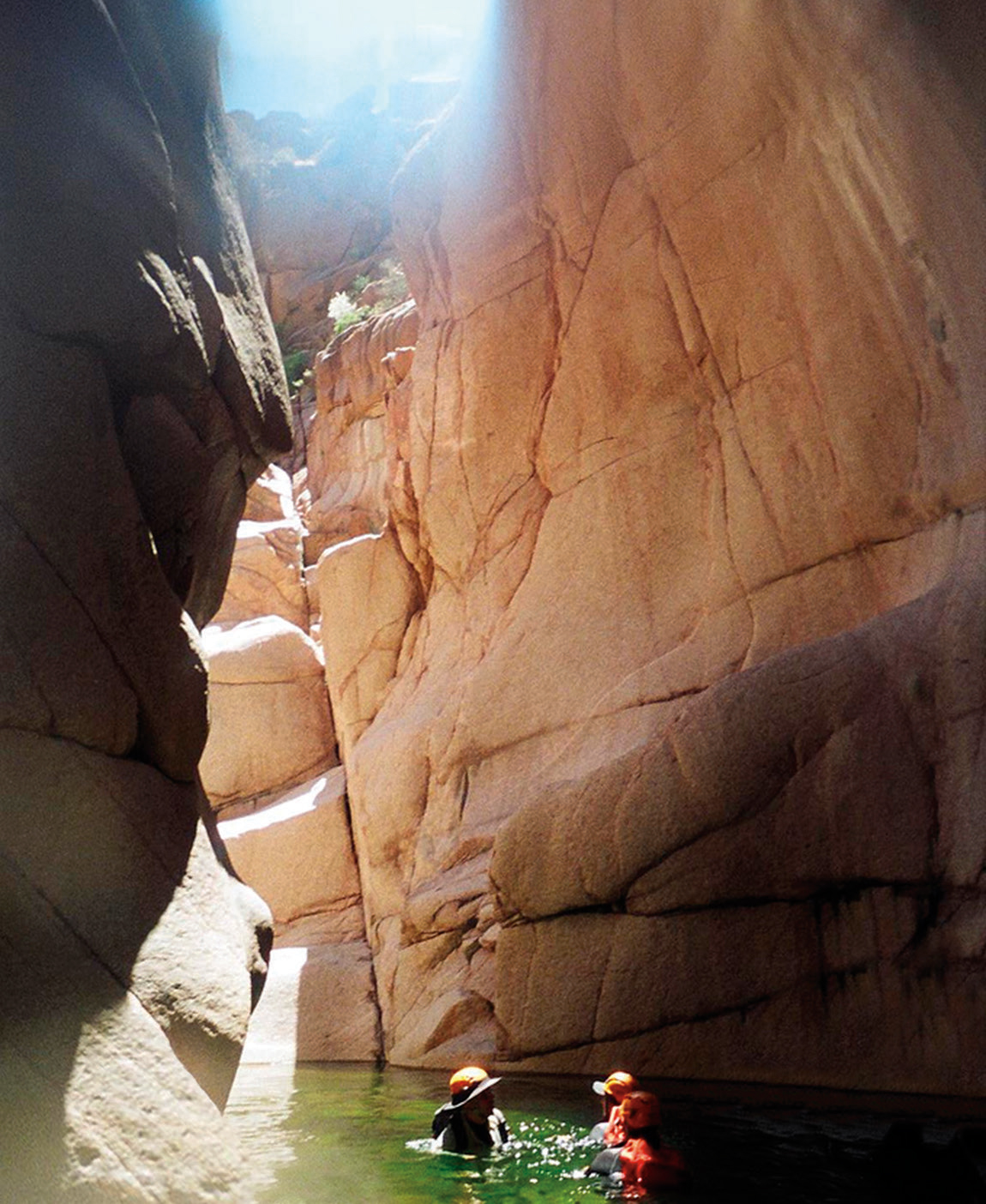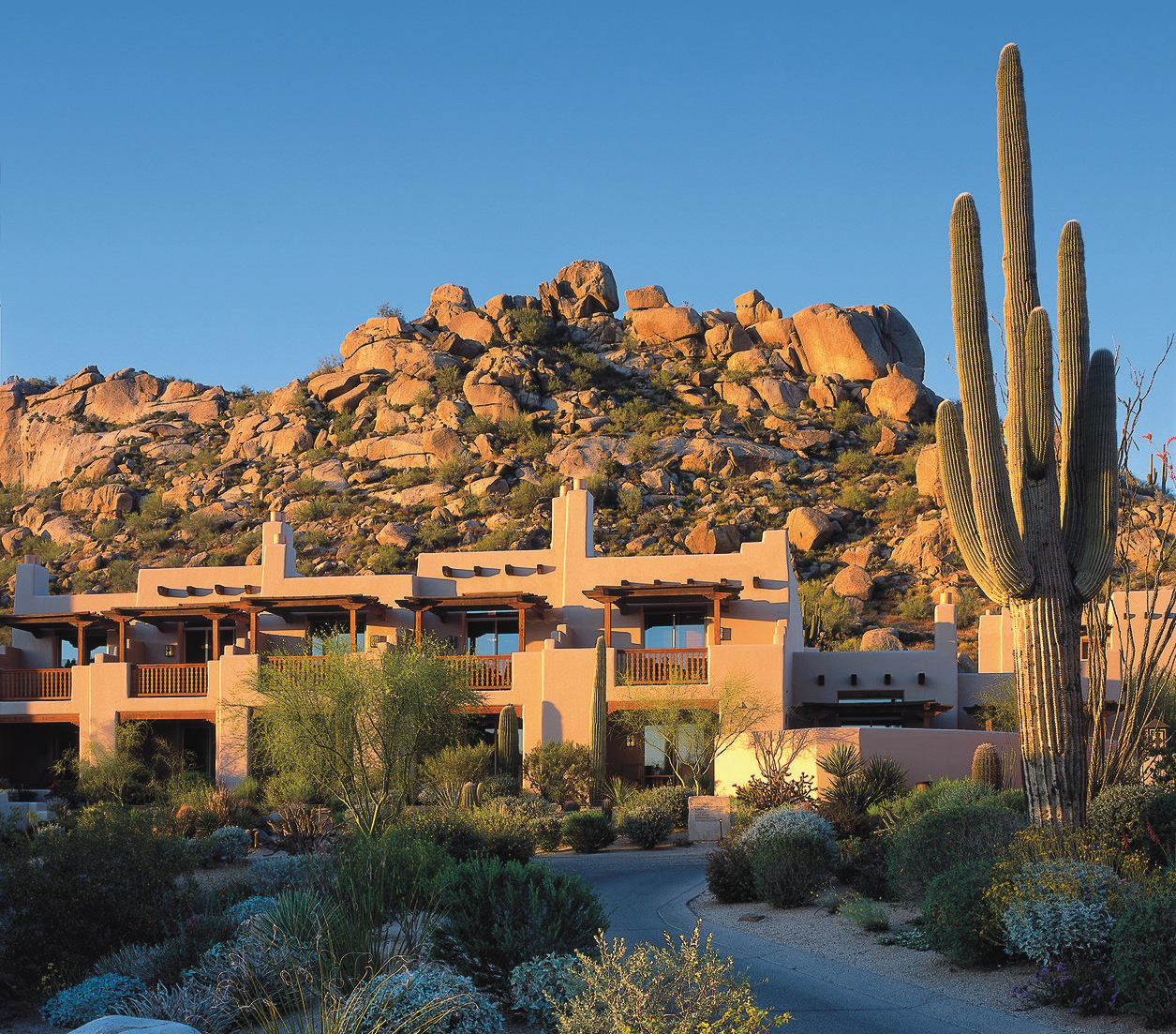-

The Grand Canyon, Arizona’s premiere attraction. ©David Lloyd/Dreamstime.com.
-

The Colorado River carves the Grand Canyon. ©Terri Leasure/Dreamstime.com.
-

The saguaro cactus, indigenous to the Sonoran Desert. ©Blindvisionllc/Dreamstime.com.
Arizona, the Grand Canyon State
A museum without walls.

There is an adventurer in all of us, a spirit pushing the boundaries that seems to burgeon when travelling. We seek it out, we travel to wonder at the height of the mountains, at the vast expanse of the ocean, at the circular motion of the stars—all in pursuit of adventure.
In an age of shows like The Amazing Race and the National Geographic Channel which display in such clarity on high-definition TVs and streaming Internet feeds from anywhere in the world, we are deluged with inspiring images that all serve to expose us to more destinations and experiences than ever before. (Remember the days of the dog-eared postcard from a friend or relative, invariably inscribed with “Wish you were here”?) In my pursuit of adventure, I travelled to Arizona to experience first-hand the sun-baked desert, the shorn cliffs, and the plunging canyons showcased countless times in images.
Travel in Arizona often conjures up days of languorous activity or rigourous relaxation. But this desert playground, with its renowned sunshine and natural splendour, offers much more. Native American folklore is woven into Arizona’s history, and tales of pusillanimous villains and heroic outlaws abound from the cowboy years, making the state a real-life adventure land. Whether you’re on a leisurely walk in the Sonoran Desert amongst craggy mountains and stately saguaros, or an endorphin-overloaded hike deep into the heart of the Grand Canyon, Arizona is majestic, but also deeply spiritual; gloriously natural, yet well developed; above all, true to itself.
Scottsdale is my Arizonan home base. “The West’s most Western town,” as it is called, was founded in 1888. Stroll down a street in Old Town Scottsdale and you will see faux Western façades on quaint shops, galleries, and boutiques; the Rusty Spur Saloon on Main Street still packs them in with live bands singing hurtin’ songs to an eclectic crowd. Nearby, a new Scottsdale is taking shape: an enclave that is urban, sophisticated, and cosmopolitan. In the vastness of the Greater Phoenix area known collectively as the Valley of the Sun, Scottsdale has a distinct identity: it’s the Beverly Hills of Phoenix. It is marked by the iconic Camelback Mountain, the legendary McDowell Mountains, sprawling parks, internationally famed golf courses, strands of tropical palm trees, and a surprising number of lakes; surprising indeed for a climate that averages just 19.5 centimetres of rainfall each year.
As I descend into the Grand Canyon, there is a silence that’s unrecognizable; a silence that is, paradoxically, the voice of the desert.
Of course, Arizona is home to that most awe-inspiring of natural wonders, the Grand Canyon, and a visit to the state without a trip to its most famous landmark would be unforgivable. As I fly north from Phoenix en route to the Grand Canyon, I’m reminded of an exercise I once heard about that’s used by Dr. Harold Mosak, chair of the doctoral scholars in clinical psychology program at the Adler School of Professional Psychology in Chicago. With your eyes closed, you are asked to visualize that you are standing on the rim of the Grand Canyon. You are alone, and need to get to the other side. How will you get across? It’s not a trick question; rather, your answer, according to Dr. Mosak, is indicative of how you deal with obstacles in your life.
Viewing the Grand Canyon from the air, the scale of the sight is so great it is hard to muster a response. The canyon is so impossibly vast—and so familiar from innumerable pictures—it could easily be a photograph. This is Arizona’s premier attraction, two billion years in the making. It is a site that humbles the soul, and invigorates the senses: 446 kilometres long, up to 24 kilometres wide, and more than 1.8 kilometres deep, at its deepest point.
I begin a hike from the South Rim, which is also where more than 90 per cent of Grand Canyon visitors start from. (The North Rim hiking trails are more remote and rugged, and require a greater degree of physical fitness.) In the first spectacular kilometre, it’s not just a trip out of the human realm, but into the geology of the earth. I take a series of switchbacks, descending through layers of rock strata. Step after step, I come to the aptly named Ooh-Aah Point, which drops precipitously to either side. The vertical distance is baffling to the eye. Here, it is not so much about looking at a view as being in the midst of one.
As I descend the Kaibab Trail, the world falls away. There is a silence that’s unrecognizable; a silence that is, paradoxically, the voice of the desert. For this mid-April day, the hike isn’t overpopulated with trekkers, yet the languages I hear from those on the trail are numerous. Not surprisingly, since more than 4 million visitors a year make the pilgrimage. The trail is rugged and steep, yet well defined and maintained, with no large parapets of rock to climb over; large juniper logs are arranged to prevent erosion from eating away at the trail.

Canyoneering in Salome Canyon, Tonto National Forest.
Continuing on, I come to Cedar Ridge, where a dazzling plateau offers spectacular views down to the inner rim. Every season of the year brings a different palette of colours. Blue, pink, orange, mauve, and deep-purple bands of rock showcase a kaleidoscope of strata spanning eons of geologic development. Layer upon layer of the planet’s crust is revealed, stratum by stratum.
The Kaibab Trail continues past Cedar Ridge, eventually reaching the Colorado River, and although I felt the canyon was calling me down, day hikers are advised to turn back at this point. Ascent follows descent, and it is a strenuous hike up. I fixate my gaze on the ground only a metre or so ahead, breaking the visual impact of the incline. I hike up. My stride is steady, my breathing heavy. I take my time.
The hike is only 4.8 kilometres round-trip, but with all the time spent oohing and aahing, the day passes quickly, and after a vertical climb at an elevation of 1.9 kilometres, my legs are done for. Thankfully, Arizona has made quite a name for itself as a great spa destination with luxurious accommodations, the ideal antidote to a day spent hiking. Back at home base, I give my body up to the healing hands of the massage therapist. I need to be brought back to form—especially since the next day involves a rock-climbing excursion.
When I visit Sven Slab (so named from when the original pioneers used a Sven power saw to cut a trail), located in Scottsdale’s McDowell Sonoran Preserve, my heart begins pounding at the sight of the sheer rock face. It goes straight up with no visible edges, no cracks. How am I supposed to climb up? The Quaker Oats climb is (supposedly) a favourite introduction for many; at least that’s what Eric, my guide on this day’s excursion, says. After the requisite briefing, it is time to gear up: helmet, shoes, harness, rappel devices, carabiners, and rope, with knots checked and rechecked. Once I’m green-lighted, it is time to take on the 5.5-rated grade slab. “You need to attack it,” says Eric as he takes his position to belay me. Easy for him to say; he downed a litre of Red Bull at 7 a.m. I stare up, looking for an edge to grip and begin.
From one adrenaline-rushing adventure to the next, I try canyoneering, an activity that can be described as whitewater rafting minus the raft.
Rock climbing challenges both your mental and physical capabilities, and with each hand grip of a crag and each new foothold, I say to myself, “You can do this.” I repeat the verse over and over—and the higher I climb, the louder I get. Rock-climbing shoes are supposed to increase the grip of the foot on the rock face due to the friction, but my legs burn, and with each leg lift it gets harder and harder. My forearms feel like mush. Finding a way to get to the top is like a chess match; I am constantly scanning the rock face trying to figure out my next move. I hesitate. Grip by grip, foothold by foothold, I inch my way up: halfway, three-quarters of the way. At the top is a lonely tree (it looks kind of like the sad shrub from A Charlie Brown Christmas). I get closer and closer, and finally, with my index finger, I reach for the top. I’ve made it. I’ve conquered it.
I turn around and pump my fist and somehow manage to smile. After a moment’s pause, I yell to Eric, “I’m ready.” I begin to rappel down. With my feet firmly planted on the ground, I am overcome with the biggest sense of accomplishment. My muscles twitch, my arms are badly scratched, my fingers are bleeding, my body is shaking—and yet euphoria abounds.
From one adrenaline-rushing adventure to the next: I try canyoneering, a sport I hadn’t previously heard of. Probably the best way to describe the activity is whitewater rafting minus the raft. After a two-and-a-half hour drive from Scottsdale and a short hike down a gentle slope in Tonto National Forest (the second-largest forest in the United States after Yosemite), I arrive at the entry point of the stunning steep-sided Salome Canyon. Suited in a full-body wetsuit, helmet, and sneakers, I step into the water and immerse myself into the deep gorge. The water flows and cuts into the pink granite and I navigate the canyon by sliding down rapids, floating down fast-flowing chutes and waves, hopping over boulders, wading in hanging pools, scrambling over slick rocks, and even rappelling down heart-wrenching heights (canyoneering uses many of the same rope and climbing techniques as rock climbing); it’s much more than just a hike down a stream. With the soaring canyon walls above me, I get a sense of Arizona’s extreme terrain.
And this is Arizona at its core, a place for multitudinous adventures, a land of seemingly limitless space and breathtaking vistas, sunswept mountains and valleys, lofty plateaus, broad mesas, narrow canyons, and tremendous stretches of cactus-studded desert. It is mysterious, magical, and seductively beautiful.

Four Seasons Resort Scottsdale At Troon North
Nestled in the foothills of Pinnacle Peak in Scottsdale’s Sonoran Desert is the Four Seasons Resort Scottsdale at Troon North. Scattered across a boulder-strewn hillside, this intimate hideaway boasts one of the Valley’s most dramatic settings. Painted in shades that match the local flora, the resort is spread out over tranquil spaces with meticulously kept grounds. Rooms and suites are housed in desert-chic casitas, some with private plunging pools that are linked by saguaro-dotted pathways.
The resort continuously tops the Best Hotel lists, and has all the expected Four Seasons amenities. The spacious interiors are designed in the heritage of the Southwest accentuated with the colours of the Sonoran Desert in bloom. The pool takes centre stage on the resort property with poolside cabanas, two of which are outfitted with flat-screen TVs, mini-fridges, iPod docking stations, and a dedicated server. The resort’s three restaurants serve contemporary cuisine, as well as incorporating the piquant flavours of the Southwest.
A visit to Scottsdale would not be complete without at least one spa treatment, and the spa at the Four Seasons offers an extensive menu with treatments inspired by Native American rituals and traditions. The Troon North Golf Club is located just next door and encompasses two championship courses—the Monument and Pinnacle—and guests at the Four Seasons have priority use of both.
The Four Seasons Scottsdale at Troon North is an oasis in the most literal sense of the word.
Originally published August 2010.




